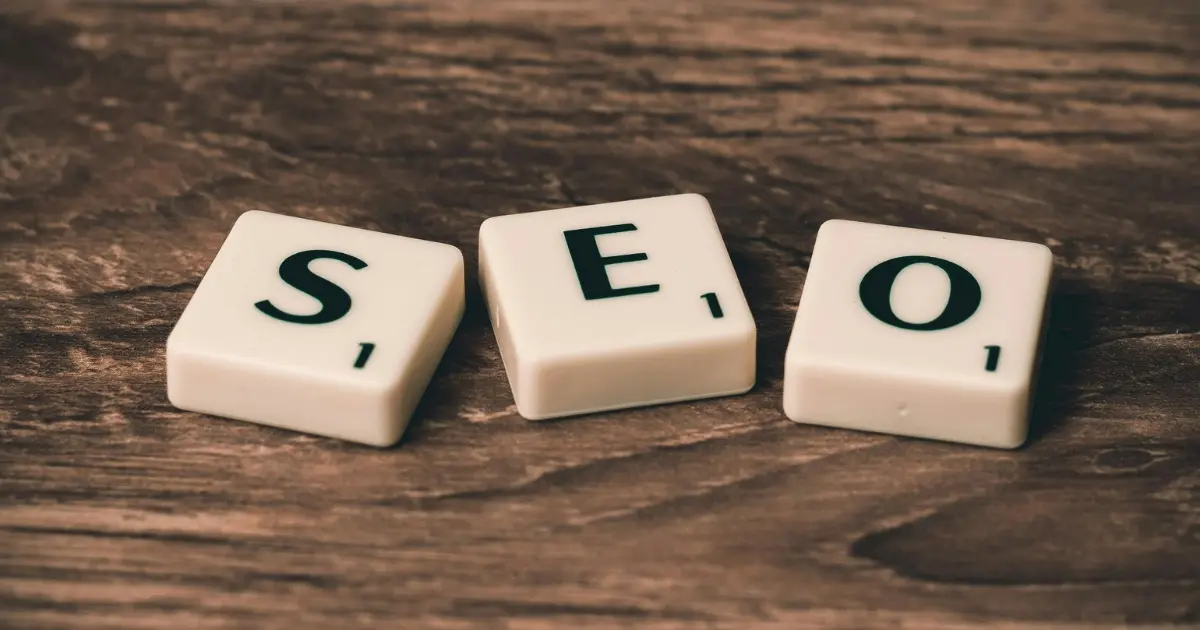
This article isn’t titled the ‘ultimate guide to business growth’ for nothing.
We’ll be covering absolutely everything you’ll ever need to know about business growth. And when we say everything—we mean everything.
So sit back, relax, and scroll. It’s going to be a long journey, but you’ll come out of it as a whizz in all things business growth.
Before we dive in, be sure to check out the boatload of growth services offered by Techdella. Our services make scaling your business easy and effective.
What is Business Growth?
Business growth is an increase in a company’s revenue, customer base, or market share over time.
Businesses need to grow because it enhances profitability. Business growth also attracts investors and builds long-term sustainability.

What Are the Main Goals of Business Growth?
Small business growth has four main goals:
- Revenue growth: An increase in sales and profitability ensures long-term success.
- Market share expansion: When you attract more customers, you increase your share of the industry.
- Brand awareness and authority: Building a strong reputation gives you a competitive edge.
- Customer base expansion: Acquiring and retaining customers helps you sustain small business growth.
Understanding the Four Types of Business Growth
Business growth is a process that is tedious yet rewarding. It takes time to achieve real progress, but every second spent trying is always worth it.
In this section, we’ll be looking at the four types of business growth. And helping you understand which growth strategies you should be focusing on.
Let’s get into it!
Organic Growth
First up on the list is organic growth. It’s the most natural way for a company to expand. This type of business growth involves a steady expansion by improving existing operations.
Simply put, organic growth is when a company improves on things that already exist in the company.
You can do this by optimizing marketing strategies and improving customer retention. Enhancing product or service offerings is another way to boost organic growth.
Examples of organic growth strategies
- Increasing product output
- Employing more people
- Improving customer experience to encourage people to spread the word about your business
- Investing in content marketing and SEO to attract more customers
Organic growth is a great place to start for small businesses and startups. It’s a low-risk method of business growth.
Strategic Growth
Strategic growth is a great business growth strategy for long-term success. It typically involves collaborations with other businesses or developing a new product to reach more people.
It’s a bit more complex than organic growth and requires a bigger investment, both in time and resources.
Despite that, strategic growth is a top choice for companies looking to expand. It provides a new source of revenue. And it reduces the risk of only operating in one market.

Examples of strategic growth strategies
- Expanding a product line or introducing a new service
- Collaborating with other businesses to reach new audiences
- Boosting sales of products and services that you already offer
- Tapping into new markets
A direct example of strategic growth is Nike’s partnership with Apple. The two companies have collaborated on various products in the past. This has allowed both of them to tap into new markets and diversify their offerings.
Internal Growth
This strategy is all about scaling your business by improving internal processes. It involves maximizing the resources available at the company. This could be in the form of systems or talents.
Internal business growth is often conflated with organic growth. But there is a key difference. Organic growth focuses on sales, marketing, and customer engagement.
In contrast, internal growth focuses on optimizing internal processes. It’s about efficiency and scalability.
Examples of internal growth strategies
- Automating workflow to enhance efficiency
- Investing in employee training
- Implementing better financial management strategies
- Creating a strong company culture
External Growth
External growth focuses on growing businesses from the outside in. It covers everything from mergers to acquisitions.
This type of business growth requires a substantial investment. It’s risky, but the chance of a high payoff makes it worth it.
It also leads to faster growth and access to new markets. With external growth, your company experiences a change in structure, which takes time to adjust to. In the end, companies who survive this stage are better for it.
Examples of external growth strategies
- Acquiring smaller competitors to increase market share
- Merging with companies that align with existing services
- Taking over companies that have potential
The 5 Stages of Business Growth
The hope of any business is to grow from a startup to a global player. Your business should be in a state of constant growth. It should move through various stages as you expand and achieve new milestones.
Understanding the five stages of business growth will help you navigate growth effectively. It will give you the insight you need to make informed decisions at every stage.
Without further ado, let’s take a look at the five key stages.
Existence Stage
The existence stage is where the dream of an entrepreneur first comes to fruition. Businesses in this stage are still trying to find their footing in a market they aren’t yet sure will accept them. It’s a stage fraught with challenges such as:
- Gaining initial customers,
- Validating the business idea, and
- Figuring out if there is a demand in the market.
These challenges make this the hardest growth stage. It’s also the stage where most businesses fall off. Entrepreneurs struggle under the weight of lifting their businesses off the ground.
The few who make it out of this stage move on to the survival phase.
Survival Stage
This comes after a business has proven that its product or service can attract customers. The focus in the survival stage is on achieving financial stability.
In this stage of business growth, you need to manage the revenue generated with your expenses. Failing to do this will leave your business in poor financial condition. The goal is to ensure the business can sustain itself.
Growth strategies for this stage involve:
- Creating a budget
- Adjusting pricing strategies
- Increasing customer retention
Success Stage
It’s a cliche, but we have to say it. In the success stage, businesses move from surviving to thriving!
Reaching the success stage of business growth is no small feat. Entrepreneurs who make it to this stage can breathe a sigh of relief—before getting right back to work.
Here, profitability is stable. This leaves entrepreneurs with a big decision to make. They can either maintain stability or push for expansion.
Expanding the business could involve introducing new products. This helps businesses reach a new audience.
Take-off Stage
At the take-off stage, the goal is to scale efficiently. This business growth stage involves decisions about market expansion, funding, and scaling.
Things get superheated in the take-off stage as companies battle to take their operations to the next level. If it isn’t executed properly, it could result in burnout.
There is a substantial amount of growth happening during this stage. Businesses often expand to new markets while maintaining a strong presence in their current ones.
The take-off stage also sees businesses rapidly exploring new products and hiring more staff.
Maturity Stage
The coveted maturity stage. Many businesses aspire to reach this stage. It’s the point where a company has achieved large-scale success.
Businesses in this stage focus on attaining sustainability in the long term. They also focus on remaining innovative and competitive. You must avoid being stagnant because this will make you fade away in the crowded market.
You also need to find a balance between growth and innovation. Both are important aspects of the maturity stage.
Knowing the stages of business growth will help put things into perspective as you grow your business. There are also many startup analytics tools to help you track growth so you know exactly which stage you’re in.
What Are the Five Indicators of Business Growth?
Measuring business growth is easy when you know what metrics to look at. There are several key performance indicators of growth. These KPIs fall into categories, which include:
Revenue and Profit Growth
This is the most obvious sign of growth. An increase in revenue and profitability clearly shows that a business is growing. You should note that revenue and profitability are not the same.
Revenue measures how much a company earns. While profitability indicates how efficiently the company operates. As a business grows, it should see an increase in both over time.
KPIs to Track Revenue and Profit Growth
- Revenue Growth Rate
- Year-over-year (YoY) or quarter-over-quarter revenue growth
- Net profit margin
- Recurring revenue in the case of subscription-based services
Customer Acquisition and Retention Rates
Gaining new customers is just as important as keeping old ones. In the journey of business growth, your ability to acquire and keep customers will be key.
A high retention rate indicates customer satisfaction and loyalty. While high acquisition rates show that your business is reaching new customers.
KPIs to Track Customer Acquisition and Retention Rates
- Customer Acquisition Cost (CAC): This refers to the amount spent on acquiring a new customer.
- Customer Lifetime Value (CLV): This refers to the total revenue generated by a customer during their time with a company.
- Churn Rate: The percentage of customers who stop patronizing a business.
Market Metrics
This measures the success of a company in its industry. Business growth involves taking up space and being a key player in your industry. Market metrics measure your business’s ability to grow and compete in the market.
The main KPI for tracking market growth is market share. This is the percentage of industry sales generated by your business.
A high market share shows that your company is doing well compared to competitors in the same market.
Operational Scalability
Efficiency is key to business growth. As demand for your product or service increases, you need to efficiently handle it.
Scalability ensures that as the company grows, operations are still smooth and cost-effective. While there are no exact KPIs for this, there are signs to look out for.
Signs of Strong Scalability
- Ability to meet increased demand without delays
- Reduction in workloads as companies automate more systems
- Efficient hiring and training processes to support expansion
Brand Awareness and Engagement
Building a strong brand presence is another sign of business growth. When more people recognize your business, it shows that you have a competitive edge.
Brand engagement also helps to boost customer loyalty. This will reduce churn rate and boost revenue.
KPIs to Track Brand Awareness and Engagement
- Social media engagement: Growing on social media means more people are interacting with your brand.
- Website traffic:More visitors to your website shows that your SEO and content writing efforts are paying off.
- Customers gained through referrals: When satisfied customers refer your brand to other people, you gain a new customer.
How to Develop a Business Growth Strategy
An effective growth strategy will help you scale your business. It’s the best way to achieve long-term success.
Before we go further, check out this checklist for startup success. It details everything you’ll need as you strive to grow your startup.
Now, let’s look at how to develop a business growth strategy.
1. Set Clear Business Growth Goals
To develop an effective strategy, you need to first define your goals. Ensure that they are SMART goals. This means they should be Specific, Measurable, Achievable, Relevant, and Time-bound.
Clear goals provide direction and help track progress.
2. Understand Growth Metrics
The growth metrics listed in the section above are crucial. Tracking the right metrics ensures your strategy is data-driven and effective.
By analyzing metrics often, you can make informed decisions and improve your strategies.
3. Leveraging SWOT Analysis for Strategic Planning
A SWOT analysis consists of four key parts of a business. Strengths, Weaknesses, Opportunities, and Threats. Entrepreneurs know these parts like the back of their hands.
You should always:
- Know your company’s strengths and find ways to leverage them.
- Recognize your weaknesses and find ways to improve.
- Look for external opportunities that can fuel growth
- Be aware of threats and develop plans to combat them.
The Role of Digital Marketing in Business Growth
Digital marketing is at the heart of business growth. It’s the perfect strategy for increasing visibility. Making your brand more known attracts new customers and boosts revenue.
Some of the most effective digital marketing strategies are:
1. Search Engine Optimization (SEO)

SEO is a digital marketing strategy that focuses on increasing search rankings. It involves:
- Writing quality content
- Adding relevant keywords
- Enhancing site speed
- Building quality backlinks
2. Content Marketing
Content marketing focuses on producing content that does four things. Attract, Engage, Educate, and Convert. Once your content does all four, you’re on the right track.
This can come in the form of blog posts, videos, email campaigns, and case studies. Your content marketing efforts increase brand awareness and lead to revenue growth.
3. Social Media Marketing

Social media marketing focuses on leveraging platforms to reach more people. An effective social media strategy should increase customer engagement and boost brand awareness.
This strategy also involves partnering with influencers to promote your brand. Social media is a powerful tool. And when used right, it will lead to immense business growth.
How Techdella Can Help You Achieve Business Growth
Techdella offers a range of marketing and branding services. From content marketing to email marketing to search engine optimization. These services help you scale your business.
At Techdella, we handle the marketing stuff. We take it off your hands so you can focus solely on growing your business.
Business Growth FAQ — Frequently Asked Questions
What is the difference between business growth and business scaling?
Business growth involves increasing revenue and acquiring customers. While scaling is about boosting revenue without a rise in costs.
What are the best sources of business growth?
The best sources for business growth are organic growth, strategic partnerships, and product expansion.
How can small businesses compete with larger competitors?
It’s tough being a newbie in an industry filled with giants. Competing with them is achievable when you leverage digital marketing, offer personalized services, stay agile, and optimize operations.
Conclusion
The key to sustainable business growth is value. As long as you deliver value consistently, growth is inevitable.
You should also strive to remain adaptable. Businesses that evolve with the market will achieve lasting success.
And if you need a guiding hand as you navigate the market, reach out to us at Techdella. We would love to be a part of your business growth journey.
Related Marketing Strategies

What Sets Techdella Apart from Other Startup Platforms?

5 Holiday Marketing Ideas To Boost Your Small Business Sales


